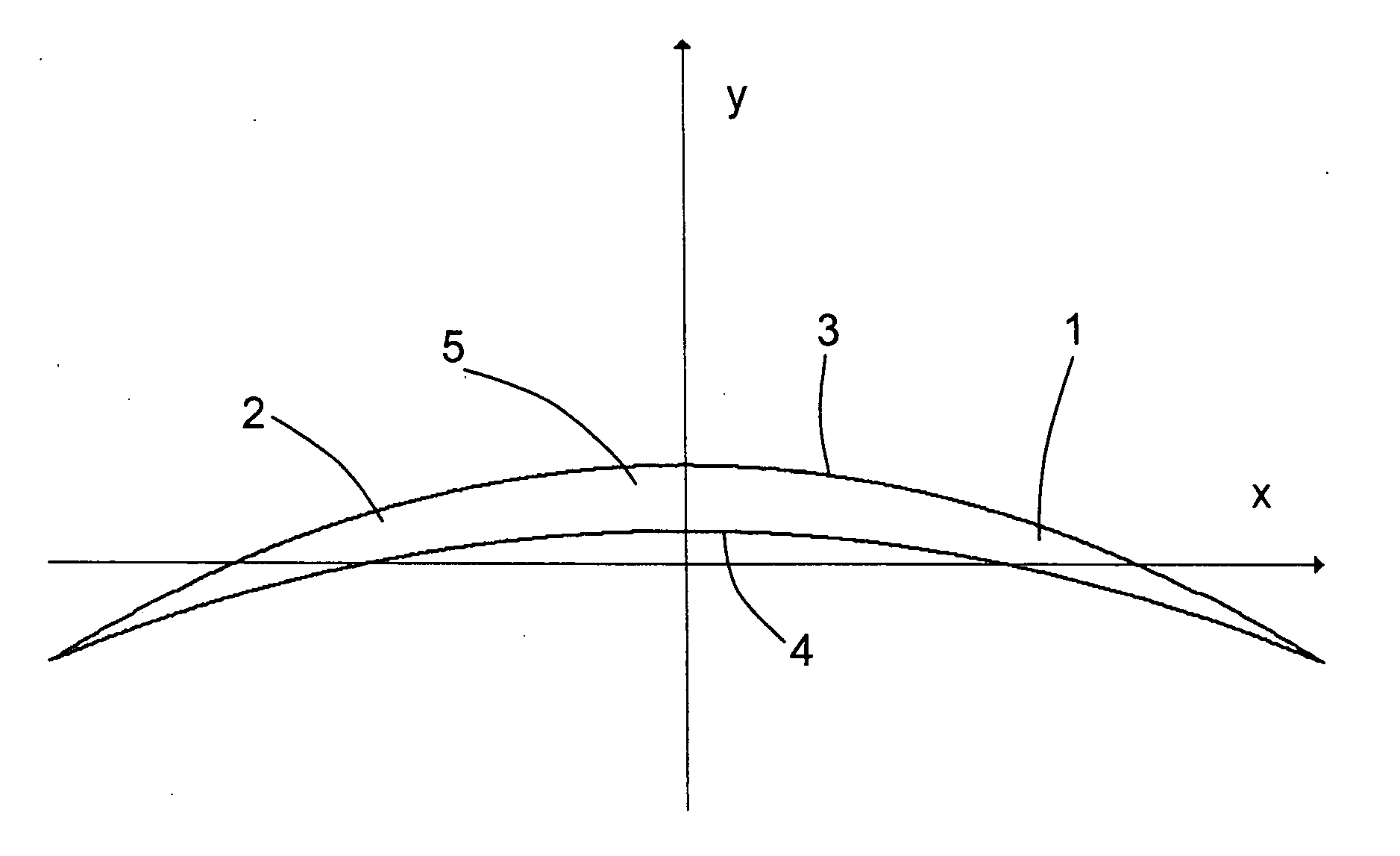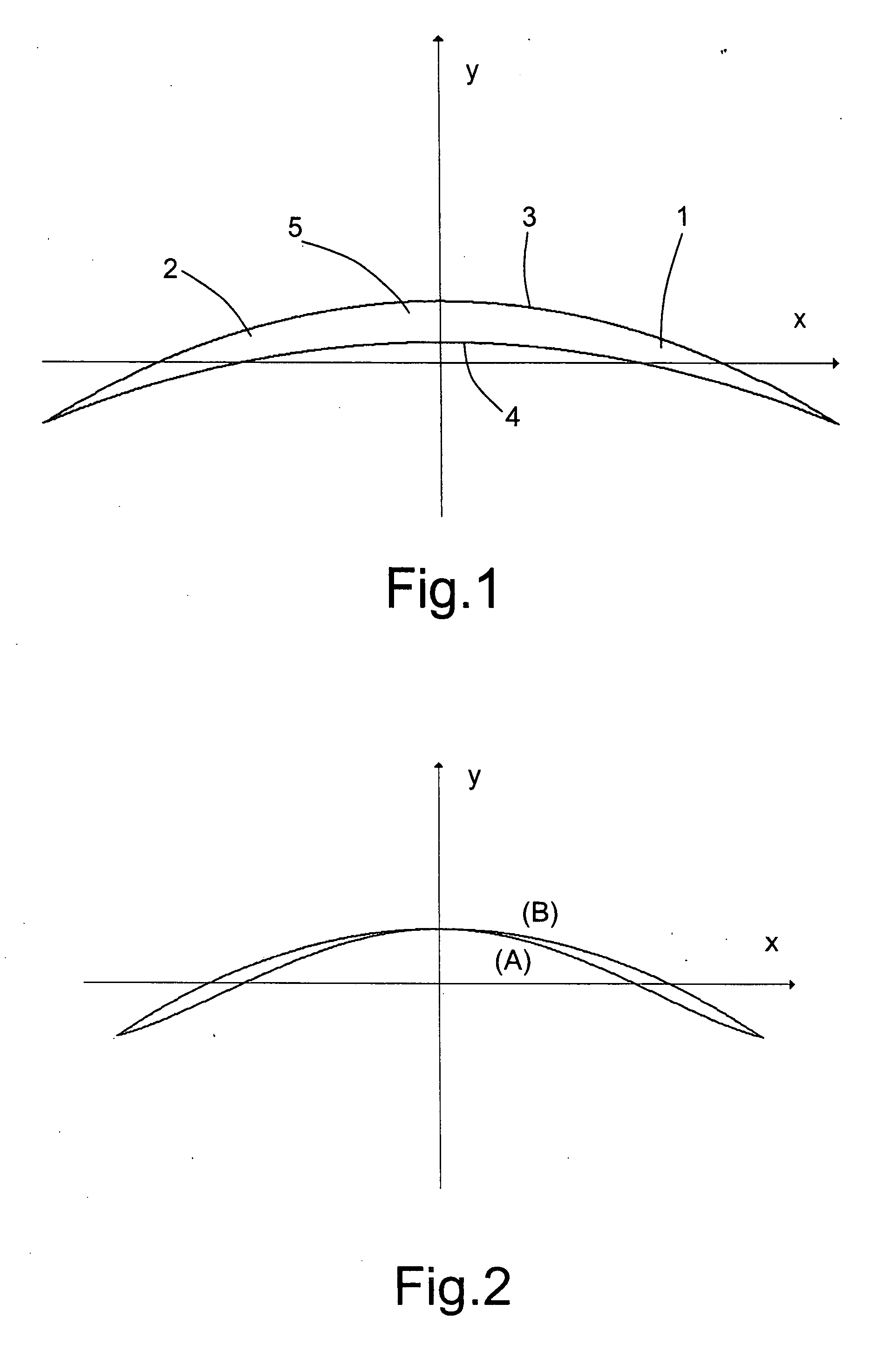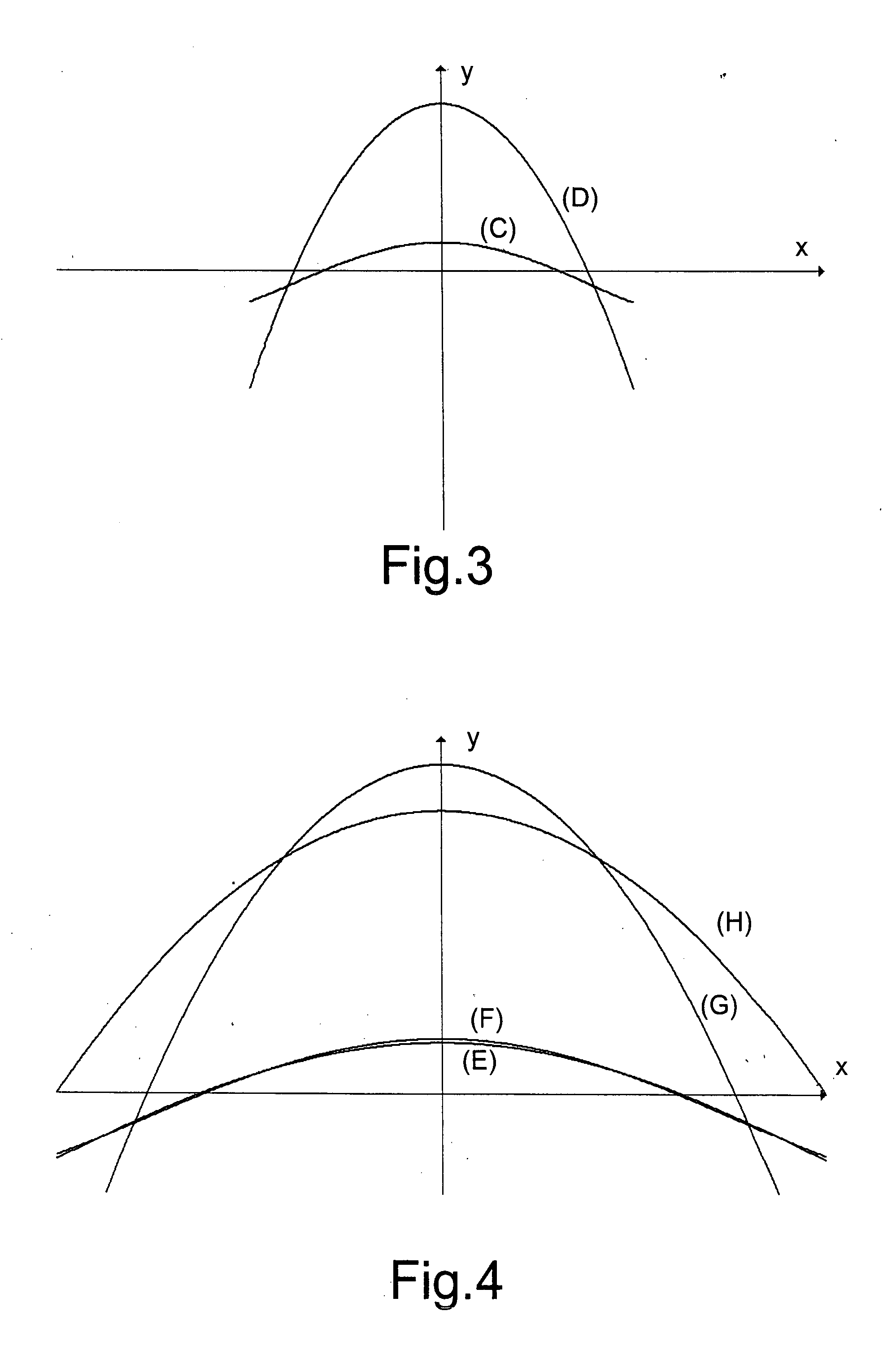Artificial lens, in particular a contact or intraocular lens, for correcting presbyopia, possibly associated with other visual defects, and relative production method
a technology of artificial lenses and presbyopia, which is applied in the field of artificial lenses (contact or intraocular lenses), can solve the problems of reducing the tolerance of users of lenses, difficult to choose the right lens for a given subject, and not improving the depth of field of presbyopia patients, etc., and achieves a high degree of short and long vision acuity and effective correction of presbyopia.
- Summary
- Abstract
- Description
- Claims
- Application Information
AI Technical Summary
Benefits of technology
Problems solved by technology
Method used
Image
Examples
Embodiment Construction
[0046] Number 1 in FIG. 1 indicates as a whole an artificial lens for correcting presbyopia, possibly associated with other refractive visual defects (myopia, hypermetropia, astigmatism).
[0047] Lens 1 is substantially circular, and is shown in a Cartesian reference system with the x and y axis origin at the geometric centre of the lens; the x and y axes indicate a radial and axial direction respectively.
[0048] Lens 1 is a contact lens or intraocular lens, and comprises a substantially known disk-shaped, generally concave / convex base body 2; a convex anterior surface 3 facing outwards of the eye in use; and a concave, flat, or convex posterior surface 4 facing inwards of the eye in use (and resting on the cornea, in the case of a contact lens). In the following description, the characteristics of lens 1 are described in terms of geometric parameters, in particular vertex power, and / or by means of optical parameters (optical aberrations). More specifically, the characteristics of le...
PUM
 Login to View More
Login to View More Abstract
Description
Claims
Application Information
 Login to View More
Login to View More - R&D
- Intellectual Property
- Life Sciences
- Materials
- Tech Scout
- Unparalleled Data Quality
- Higher Quality Content
- 60% Fewer Hallucinations
Browse by: Latest US Patents, China's latest patents, Technical Efficacy Thesaurus, Application Domain, Technology Topic, Popular Technical Reports.
© 2025 PatSnap. All rights reserved.Legal|Privacy policy|Modern Slavery Act Transparency Statement|Sitemap|About US| Contact US: help@patsnap.com



